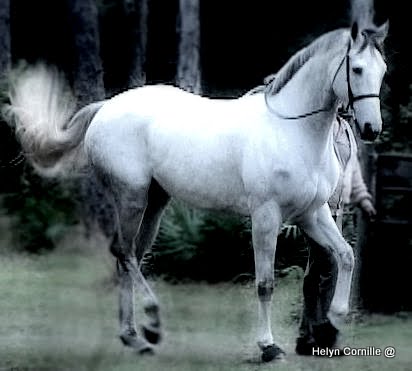Chocolate
Chocolate
Jean Luc Cornille

Today, it was on the same internet page a funny quote, “Careful; chocolate makes the jeans shrink” and a picture of Chazot working in hand. My mind went immediately on the ability of human been to do not face the problem. Chazot’s picture has been extracted from the sequence ending the video “The making of Chazot.” He is at the trot, in hand with the reins completely loose. Theological thinking perpetuates the belief that the middle of the horse, the back, can be controlled acting on the horse extremities, the hind legs at one hand and the bit at the other end. This is the same refusal of reality than the chocolate shrinking the jeans. At the same level of derision are the theories that manipulating the hind leg will fix the stifle or manipulating the forelegs, will unlock the scapula. Instead of focusing on the source of the kinematics abnormality, proper functioning of the back and consequential effect on the limbs, marketing strategies claim that the chocolate shrinks the jeans.
When limited to a trick, the work in hand is executed between the hands holding the reins and the whip activating the hind legs. It is basically the same archaic idea than flexing the back that can be compared as a bow, by shortening the string, pectoral and abdominal muscles. Modern words as used such as the “core,” but it is basically the same old idea. The bow and string concept has been conceived in 1946 by L. J. Slijper. In 1964 Richard Tucker explored the capacity of the back muscles to convert the thrust generated by the hind legs into horizontal forces, forward movement, and upward forces, balance control. It was too pertinent for riders submitted to tradition, to think and never the less apply the discovery. We did, and it was the birth of the science of motion.
Knowing Chazot unusual power and very high spirit and energy, it is obvious that the dialogue with the horse working in hand is not about the reins and the whip. We communicate back to back. Chazot perceive and follows the nuances in muscle tone of my back. The word “back” is indeed a metaphor as it is in fact the energy created through adjustments of muscle tone of my entire body. The ones who still believe in shortening the lower line between the hands and the hind legs try to explain the picture through the principles that they want to believe, the chocolate shrinking the jeans. They see lightness through the loose reins when in reality, the loose reins are just the outcome of a much more complex and sophisticated coordination that is the work of the back muscles. The fact is that such coordination cannot be educated between the bit and the hind legs. In hand or riding, the conversation is back to back, the conversation is the subtle adjustments of the horse back muscles responding to the subtle adjustments of the rider back muscles. This of course, implies moving away from another archaic concept, which is submission. It is a dialogue. It is a partnership between two intelligences, the horse intelligence which can process a body coordination far more sophisticated than natural reflexes and the rider intelligence, which has the capacity of analysis and therefore analyze the horse’s reactions and guide the horse’s brain toward the appropriated body coordination.
Jean Luc Cornille 2016
Click for information about IHTC



 twitter
twitter facebook
facebook google
google pinterest
pinterest linkedin
linkedin